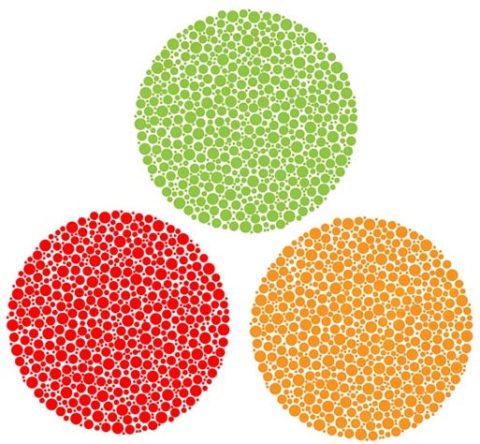TL:DR – If you are a tetrachromat, you have four colour-pigment cells (cones) in your eyes. This means you can see more than a billion colour combinations. Trichromats have just three and so can see a mere 100 million colours. You cannot be tested for tetrachromacy online because screens only have pixels based on three colours.
Do you remember *that* dress – the one that some people thought was gold and white but others said was blue and black. Since then a lot of colour vision questions have emerged. People eventually got bored after the initial couture virality. It’s now been around the world’s media 50 times in all its shades, but there is still plenty to say. Wired magazine sewed up the threads, so I won’t go into that and you can Google it if you really want to see their article.

There is a “spectrum” of colour experience. Coloured charts of different shades and hues are doing the rounds. If you see fewer than 20 different hues, the article accompanying it says you’re probably a dichromat. Dichromats have two cones in their retinas or one of the three not functioning in the way it should. This problem us usually referred to as colourblindness. If you see between 20 and 32 you’re a trichromat, three fully functioning cones. But, if you see 32-39 different colours you have a fourth type of cone in your retina making you a tetrachromat. Colours can be distinguished much more apparently. However, tetrachromat people are not so keen on yellow. If you can see more than 39 colours, you’re not a pentachromat, you’re a little fibber.
Hue, hue, parity, and hue
When I looked at the chart, I thought I could see 36 hues, well definitely more than 32…it seemed to depend on what angle I was looking at my laptop screen and whether my eyes were scanning across the width of the spectrum rather than staring as to whether distinct bands appeared to me or not. I couldn’t get a consistent count. There were definitely at least 32, but possibly just 32. I know for a fact that I am not colour blind.
So, I scouted around for an alternative test for tetrachromicity, which looks a bit like the standard test for so-called “colour blindness” (dichromaticity). If you can see anything other than the three obvious colours seen by trichromats, then you’re obviously a tetrachromat…except that…doesn’t make sense…
It got me thinking. How can these tests be valid? Computer screens only use red-green-blue pixels. They cannot display all the hues a tetrachromat would be able to see. To see all those hues, you’d need a fourth colour in each pixel to represent all the possible colours visible to a tetrachromat.
I checked around and found another blogger who agrees, an online test cannot demonstrate tetrachromicity. As she says: “computer screens do not provide enough colour information to be able to ‘tap into’ the extra dimension that tetrachromats may possess”. Vision expert, Mark Changizi confirmed this point.
Fewer than 50 shades
So, if you were counting almost 50 shades hues of colour in that chart and imagining that you somehow have a superpower, well, the odds are against you. Sorry about that. Incidentally, there are, it seems, no men who are tetrachromats, but a few women, and definitely Hummingbirds and Blue Tits.